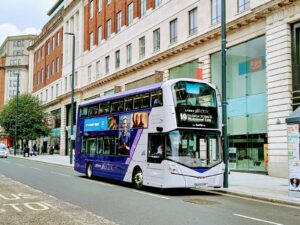The Clean Air Fund have published a guide to implementing Clean Air / Low Emission Zones, aimed at city leaders, politicians and planners who are considering taking the step.
The guide – published today – has been compiled by Arup in partnership with International Council on Clean Transportation (ICCT) and Kaleidoscope Health and Care and provides a foundation for targeted action aimed at improving air quality, including measures for traffic control, limited traffic zones and emission standard controls.

The toolkit comes at a time when politicians in the UK are looking for less inflammatory ways of reducing air pollution. Manchester’s ‘investment-led’ approach to improving the city’s air quality was introduced at the expense of the Clean Air Zone that was originally proposed.
Despite this, a need for action still exists on a global level. As the guidance points out, by 2050, seven out of ten people will be living in cities where the air quality is dangerous to their health.
The report recognises that Clean Air Zones are not one-size-fits-all solutions, and explains that they should be designed to the specific needs of of that location.
It also covers alternative and/or complementary policies such as improving public transport, or addressing emissions from domestic heating and cooking.
The guidance dives into the experiences of a diverse range of cities – from Krakow to Jakarta – gathering insights from a variety of perspectives, across various stages of the implementation process.
The 130 page document is split into 10 chapters:
- Introduction
- Benefits and challenges of Clean Air Zones
- Is a Clean Air Zone right for your city?
- Planning for a Clean Air Zone
- Communication and engagement
- Designing a Clean Air Zone
- Implementing a Clean Air Zone
- Monitoring the impact of a Clean Air Zone
- Case Studies
- Glossary and references
Jane Burston, Chief executive at the Clean Air Fund, said: ‘Air pollution affects us all, but cities and their residents have been on the frontline for decades. There is much we can learn from their efforts to tackle dangerous levels of air pollution.
‘This guidance reflects that there might not be a one-size-fits all approach to clean air but that there is a wealth of global evidence and experience that can help communities decide on the right solution for them. Whether it’s a Clean Air Zone or set of complementary measures, effective action against air pollution is possible. We all deserve access to clean air and our cities are leading the way in unlocking the benefits.”
Sarah Legge, Associate Director at Arup – who spoke at our National Air Quality Conference in London last year – said: ‘Clean Air Zones have the potential to deliver air quality and health benefits in cities. They can support sustainable urban development. They can be an effective part of urban transport or environment programmes.
‘This comprehensive guidance provides practical advice for cities on how to plan, design, implement and monitor Clean Air Zones. It looks at political and community engagement and communication. It sets out how to effectively deliver public health benefits and protect the most vulnerable. Wider impacts are also considered. The guidance reflects the different challenges and opportunities faced by cities around the world – setting out options that can be tailored by the cities to meet local needs.’
Above image: Alastair Johnstone / Climate Visuals

















Leave a Reply